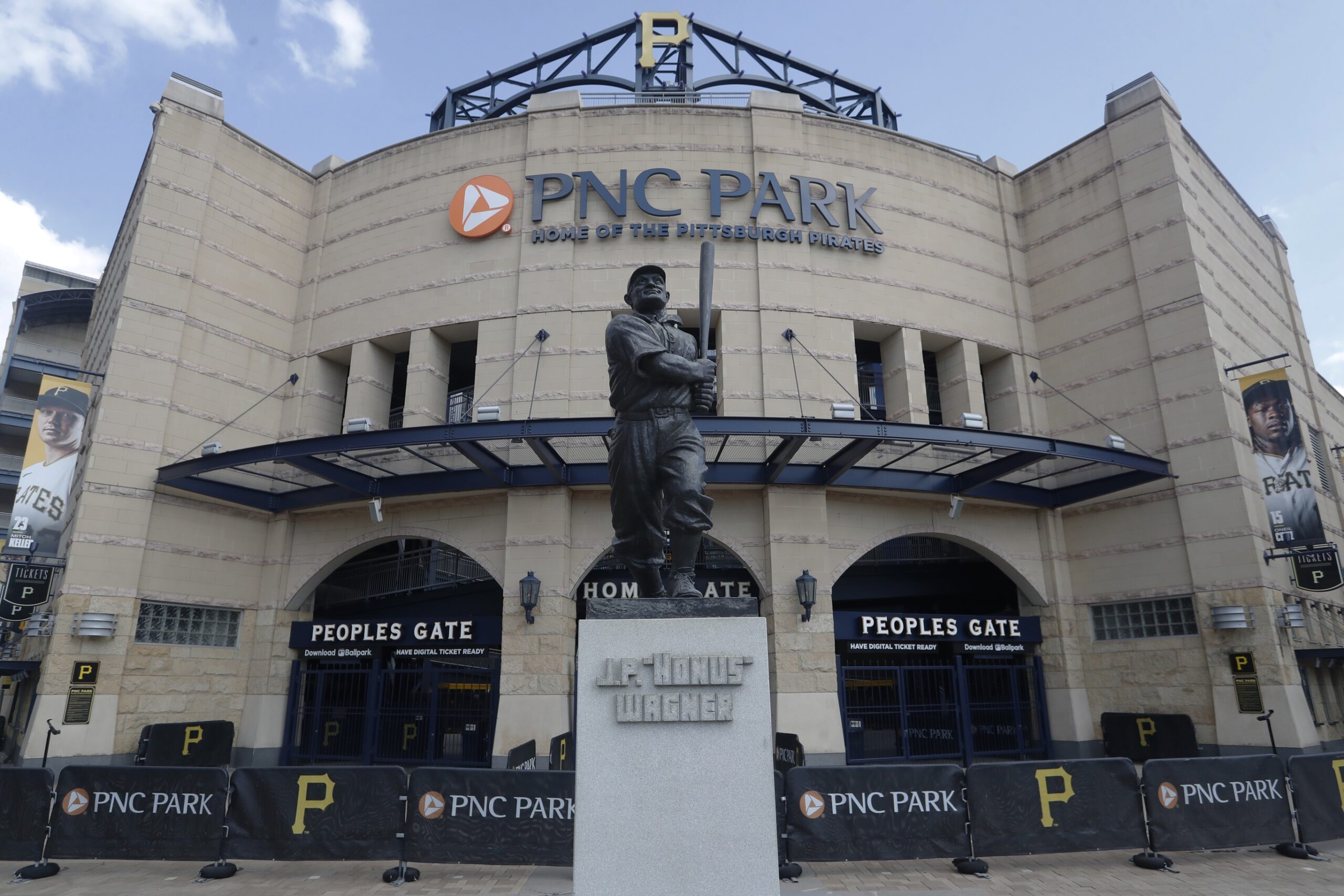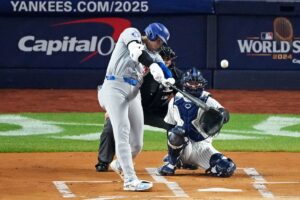Last week, the Pittsburgh Pirates announced the 2024 inductees into the Pirates Hall of Fame, with some glaring omissions remaining. The 2024 inductees are Barry Bonds, Jim Leyland, and Manny Sanguillén. This is not to suggest that they aren’t deserving candidates. They are. However, here are five other worthy candidates who have been bypassed for three years now.
Pittsburgh Had Its Own “Babe”
Babe Adams, P, 1907-26; 194-139, 2.74 ERA, 205 CG, 16 saves, 1.09 WHIP. “Far above all others on the tablet of baseball fame, marking the highest point ever reached in individual brilliancy and outshining the greatest previous achievements in the annals of the Nation’s sport, must be written to-day [sic] in large and blazing capitals the name of ADAMS,” blared the October 17, 1909 edition of the Pittsburgh Daily Post after Adams won game seven of the 1909 World Series against the Detroit Tigers. Adams, then 27, started Games 1, 5, and 7 in the Series, winning all three while tossing complete games. The right-hander surrendered just four earned runs and held the legendary Ty Cobb to a 1-for-11 stat line.
In 18 seasons as a Pirate, Adams won at least 17 games five times. This included records of 22-12 in 1911 and 21-10 in 1913, years when he received votes for the National League Most Valuable Player Award. He had the best WHIP in the NL five times and the best strikeout/walk ratio four times. Adams was also a member of the Pirates’ 1925 World Series champions, albeit in a lesser role. His 50.5 WAR leads all Pirates pitchers all-time. He should have been one of the first in the Pirates Hall of Fame.
Treading Gingerly
Ginger Beaumont, CF, 1899-1906; .321/.369/.404, 200 SB, 124 OPS+. Beaumont was one of the best singles hitters in baseball history during an era where power-hitting wasn’t valued or encouraged. He won the NL batting title in 1902 when he hit .357. He led the league in hits for three consecutive years from 1902-04. Batting leadoff in front of Fred Clarke, Tommy Leach, and Honus Wagner, he helped give the Pirates a batting order that was the envy of baseball. In 1903, Beaumont led Major League Baseball with 137 runs scored and 209 hits. The Pirates won their third straight pennant and competed in the first World Series against the Boston Americans. In that Series, he was 9-for-34 with a triple, two stolen bases, and two RBI.
The defensive metrics that we use today were nonexistent in his era. It was also a time when official scorers were unkind toward fielders. Thus, as a Pirate, Beaumont was charged with 103 errors, while being credited with 100 outfield assists. Anecdotally, he was considered an excellent defender. The Pirates traded him after the 1906 season. He went on to play four more seasons.
The Pirates’ All-Time Winner
Wilbur Cooper, P, 1912-24; 202-159, 2.74 ERA, 263 CG, 14 saves, 1.199 WHIP. Whatever has kept Cooper out of the Pirates Hall of Fame is a mystery. The left-hander is the Pirates’ all-time leader in wins and complete games. He’s tied with Adams for the all-time Pirates lead with 185 Adjusted Pitching Runs, which measures runs prevented above average. He won at least 19 games in six seasons for the Pirates. After the 1924 season, the Pirates traded Cooper, Rabbit Maranville, and Charlie Grimm to the Chicago Cubs. In return, they received George Grantham, Vic Aldridge, and Al Niehaus. News of the deal made the front pages of The Pittsburgh Post and The Gazette Times. Cooper played three more seasons after the trade.
Incredibly, Cooper is one of only two pitchers who have pitched over 3,000 innings with an ERA below 3.00 who aren’t enshrined in the Baseball Hall of Fame. The only possible explanation is that Cooper wasn’t particularly well-liked. He had difficulty hiding his displeasure on the mound when his teammates made errors behind him. Summarizing Cooper’s time in Pittsburgh after the trade, L.H. Wollen of The Pittsburgh Press wrote, “The southpaw . . . did not hold a warm spot in the hearts of many followers of the Pirates because of an apparent listless attitude on occasions when matters seemed to be going against him. Despite the fact that Cooper has maintained in the face of such charges that he has always given the team his best, fans in great numbers were of the opinion that his mound actions at times were not wholly conscientious.”
If this is what’s keeping him out of the Pirates Hall of Fame, after 100 years it’s time to forgive.
“A Beautiful Ballplayer to Watch”
That’s what Wahoo Sam Crawford told author Lawrence Ritter in The Glory of Their Times about Tommy Leach, 3B/CF, 1900-1912, 1918; .271/.332/.373; 43 HR, 625 RBIs, 271 SB. Leach was generously listed at five-foot-six, 150 pounds, and was known for his speed. His first year in the major leagues was 1898 when he joined the Louisville Colonels of the American Association. Leach hoped to play shortstop but noticed they had a guy named Wagner there. Leach wisely had a change of heart and became a third baseman.
In 1902, Leach led the NL with six home runs and 22 triples. While a Pirate, he was in the top 10 in home runs in the NL five times, despite never hitting more than seven in a season. Most of his home runs were inside the park. He also was in the top 10 in position player WAR four times, although in his time the only war anybody knew about was raging in Europe following the assassination of Archduke Franz Ferdinand of Austria.
As did many star players of his era, Leach filled in at other positions whenever necessary. By 1909, he primarily played center field, which better suited his speed. He played in the World Series of 1903 and 1909, where he proved to be a clutch performer. His postseason stat line reads .310/.355/.517 with four doubles, four triples, and 10 RBI. The Pirates traded him during the 1912 season and reacquired him for his final season in 1918. Leach played in the shadow of Wagner and Clarke and deserves to join them in the Pirates Hall of Fame.
The Eternal Optimist
Chuck Tanner, manager, 1977-85; 711-685, one World Series title. The Pirates acquired Tanner from the Oakland Athletics in a rare manager-for-player trade for Sanguillén. Tanner brought with him a sunny disposition and an exciting philosophy that involved movement on the base paths and reliance on a deep bullpen. The Lumber Company of his predecessor Danny Murtaugh became the Lumber ‘n’ Lightning Gang. Tony La Russa is credited with being the architect of modern bullpen usage. However, Tanner, Sparky Anderson, and Whitey Herzog were the real pioneers in that area back when La Russa was still in the minors, trying to make it as a utility infielder.
After two close second-place finishes in 1977-78, Tanner led the Pirates to the 1979 World Series championship. A master strategist, everything he did in 1979 turned to gold, whether he sent a pitcher out to play left field or pinch-hit for a player who was 4-for-4. The Pirates came back from a 3-1 deficit in games to win that World Series over the Baltimore Orioles. Before Game 5, Tanner learned that his mother had passed away. He told his players to act like the Pirates, turn up the music, and have fun.
Pirates Hall of Fame Omissions are Hard to Figure
It’s hard to figure out why Leyland, who never won a pennant with the Pirates, is in their Hall of Fame but not Tanner. The Pirates brain trust has always had an infatuation with the Leyland era. As for the 1979 team, not so much. It’s the same thinking that caused them to reject an unsolicited offer from Mike Easler to be their batting coach.
As for the others omitted, it’s understandable that the Pirates have been selecting Hall of Fame candidates who fans remember, and who are probably amendable to coming to Pittsburgh for the induction ceremony before the game on August 24. Still, there are glaring omissions that hopefully be rectified next time around.
Main Photo: © Charles LeClaire-USA TODAY Sports






